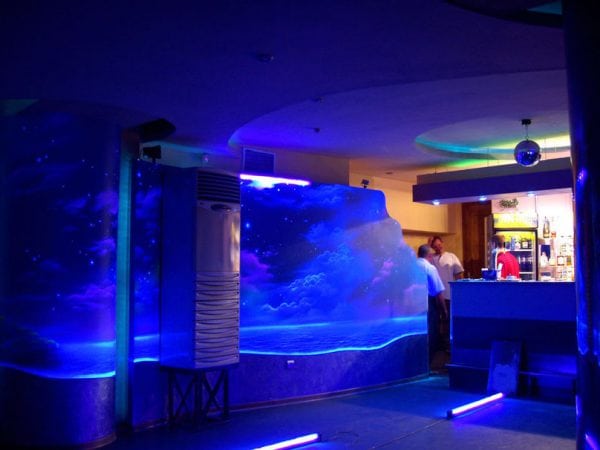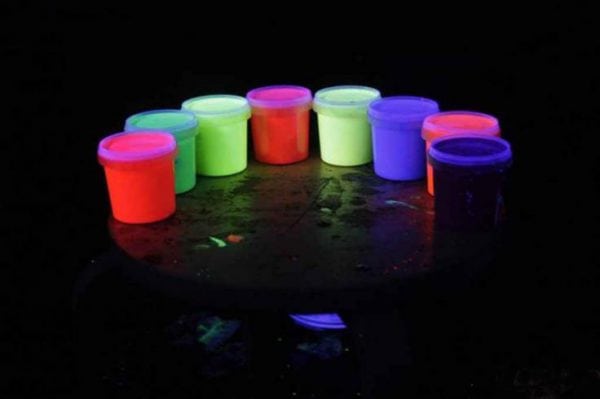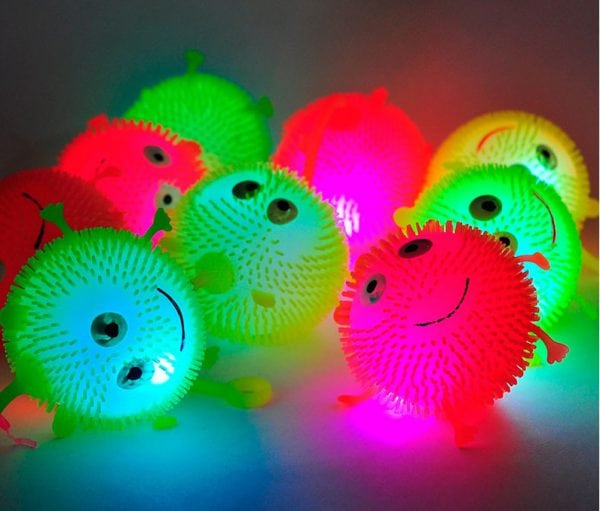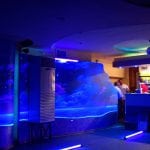Today, phosphorescent paint is used to paint coatings that glow in the dark. Using phosphoric paint, you can do beautiful and original things. The main component of this paint is phosphorus, which is a material with light-accumulating properties. The peculiarity of this paint material is that it glows in the dark without additional illumination.

Accordingly, a phosphorus-based material has the ability to accumulate light energy, which it can give off in the dark for 10 consecutive hours. At the same time, modern luminous paints are considered harmless, since they do not contain radioactive or toxic substances. In modern conditions, phosphorescent paint can not only be purchased in finished form, but also made with your own hands at home.
to contents ↑Varieties of luminous compositions
All materials with phosphorescent properties can be divided into several types depending on the material for which they are intended:
- Phosphor paints for metal are used for painting metal coatings. For example, it is often used for applying original prints on cars, airbrushing, painting rims, as well as for decorating interiors and facades of buildings.
- Glowing fabric paint It is used to apply bright patterns to clothes that can glow in the dark. This type of paint material is actively used by manufacturers of advertising textiles.
- Phosphorescent-based paints for glossy coatings and glasses allow you to make original drawings on wine glasses, glasses, glasses or even ordinary glasses.
- A water-based phosphorescent liquid is often used for application to fresh flowers. Thanks to this composition, you can achieve a unique glowing bouquet effect.
- Phosphorus-based paints for wooden surfaces are used to create decorative elements on fences, gates, window frames and other wooden objects.

- Phosphorescent paints for concrete are intended for applying luminous elements to a concrete or stone surface. Such paints and varnishes have recently become actively used for decorative painting of pavers, bricks, borders and so on.
- Compositions for printing by silk-screen printing on film are used for the manufacture of advertising stickers.
- Phosphorescent paintwork material for plastic products can be applied to any items made of polystyrene, polycarbonate or polypropylene.
- Aerosol paint with a phosphorescent effect is available in spray cans.It has a unique formula that allows you to quickly apply an ultra-bright luminous layer to the surface. Such a paint and varnish material is often used for painting display cases, billboards, sports equipment, toys and so on. A distinctive feature of the aerosol fluorescent composition is that it can be applied to any surface, be it wood, plastic, metal or paper.
How to make phosphorescent paint yourself
Today, everyone can make glowing paint with their own hands at home. The manufacture of this paint material involves several successive steps:
- First of all, you need to buy a luminous plastic toy of small sizes. It is desirable that it be made of polypropylene. It is better to check the toy with a dosimeter, although in modern conditions such things can no longer be radioactive. In addition, you should immediately make sure that the brightness of the light gradually decreases in the dark and increases again after recharging in the light. This is necessary in order not to confuse a phosphorescent toy with chemical luminous tubes in which a liquid glows, and not a solid substance. You cannot make luminous paint from them yourself.

- With the help of nippers, you need to grind the toy into elements no larger than 5 millimeters in size. These parts are poured into a container with solvent resistant walls.
- Next, you need to take a non-toxic, but sufficiently strong solvent that can dissolve polypropylene. This solvent is poured into the elements of a plastic toy. After this, you need to wait until they all completely dissolve in the liquid.
- When the details of the luminous toy are completely dissolved, the resulting phosphorescent paint can be poured into the bottle and screwed tightly on the lid. It is understood that the bottle should be solvent resistant.
- Now you have a fluorescent composition with which you can paint almost any surface. For painting, it is best to pour a little paint in a saucer with strong walls. It is recommended to paint with a brush or a poster pen. Using these tools, you can apply any pattern or pattern to the surface.
- After the paint dries, you can start charging with a light source. It is best to choose a source in which tones of the blue spectrum predominate. At the same time, the red and infrared spectrum do not contribute to the charge of the luminous coating and even slows it down. The high intensity of red light can lead to the discharge of the phosphorescent surface. If you want the paint to charge and glow at the same time, it must be used to paint objects that are exposed to soft ultraviolet light. A similar effect is actively used at discotheques. True, in such an intensive mode, the phosphor can become unusable quite quickly.
Thus, a phosphorescent based paint has a wide range of applications, which makes it more and more popular. This unique paintwork material can be done with your own hands right at home.





Good afternoon, I am looking for phosphoric paint to decorate the facade of the house. with a good glow in the dark. to paint polystyrene products for windows, doors, What can you offer?